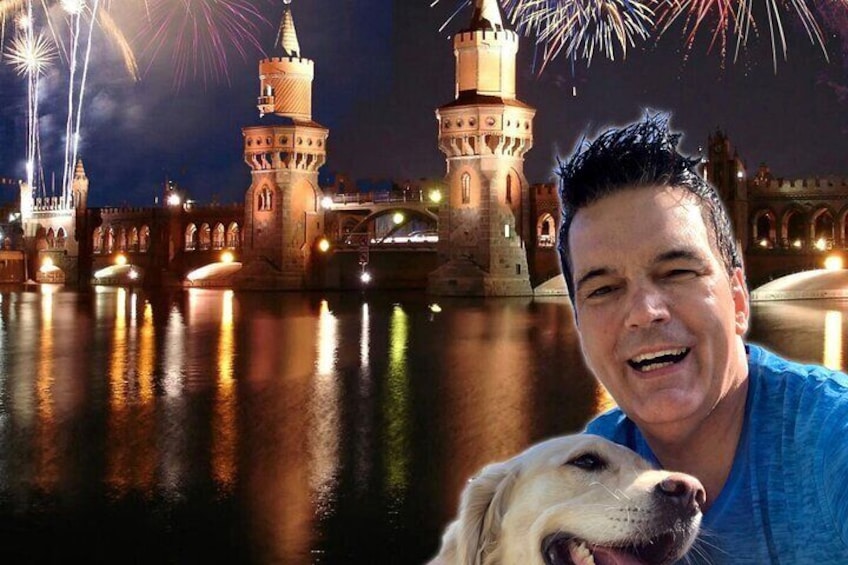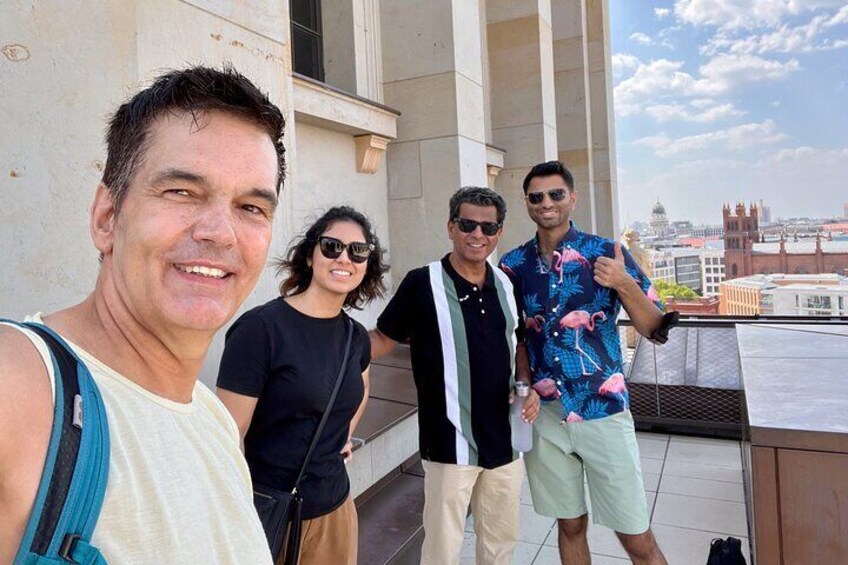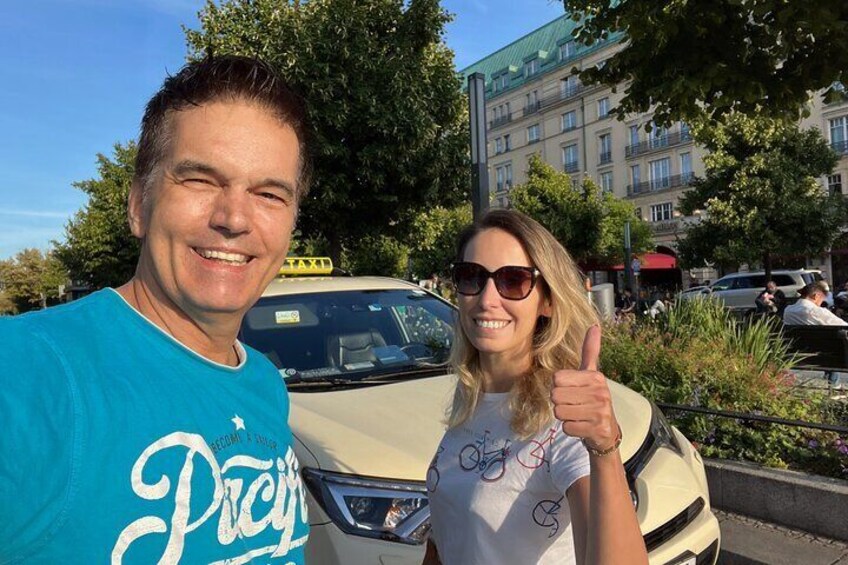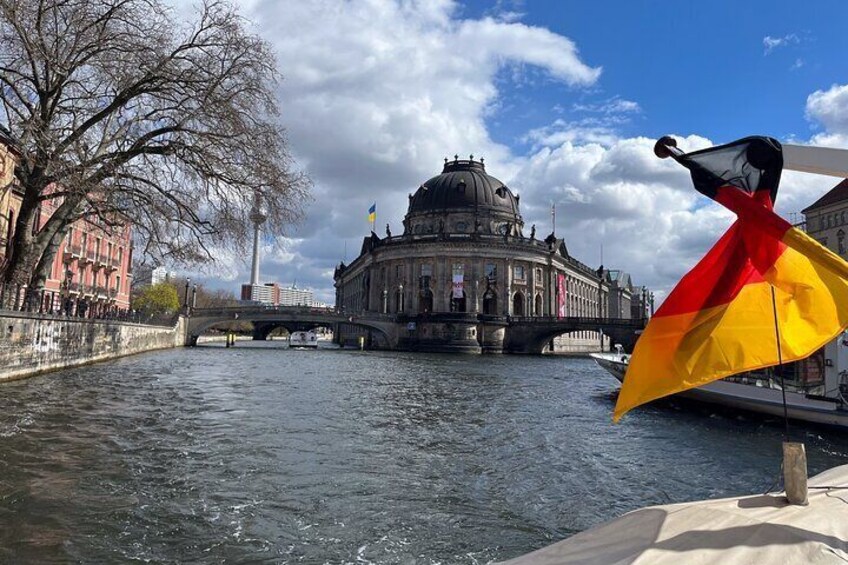Members save 10% or more on over 100,000 hotels worldwide when you’re signed in





Private Taxi Tour of Berlin + Extras – Extended & Relaxed 6-8h
10/10
10 out of 10Features
- Free cancellation available
- 8h
- Mobile voucher
- Instant confirmation
- Selective hotel pickup
- Multiple languages
Overview
In contrast to bus trips, with an individual city tour you have the opportunity to stop almost everywhere - be it for a photo shoot, be it for a snack or break, be it for a coffee. Or for a longer tour to take a closer look at an object or to have it explained (e.g. Topography of Terror, Checkpoint Charly, Hackesche Höfe, Brandenburg Gate, Berlin Palace/Humboldt Forum). According to your interests and wishes! And unlike a walking tour, you don't just see a tiny part of our city. Here you can still immerse yourself in Berlin districts (Kieze) such as Kreuzberg or Friedrichshain. On this tour we have relaxed time even for extra destinations such as Charlottenburg Palace, Tempelhof Airport, Wall Memorial or the Soviet War Memorial in Treptow Harbour. And enjoy the luxury of being picked up personally from your accommodation in the S-Bahn ring. And all in a real Berlin luxury SUV!
Activity location
- Brandenburg Gate
- Pariser Platz
- 10117, Berlin, Germany
Meeting/Redemption Point
- Brandenburg Gate
- Pariser Platz
- 10117, Berlin, Germany
Check availability
English 7-8h + castle visit
- 8h
- English
Charlottenburg Castle: The castle visit is included. A time slot is booked, which is usually at the beginning of the tour
Pickup included
German 7-8h + castle visit
- 8h
- German
Charlottenburg Castle: The castle visit is included. A time slot is booked, which is usually at the beginning of the tour
Pickup included
What's included, what's not
- Private transportation
- WiFi on board
- Air-conditioned vehicle
- Both the taxi ride according to the tariff (7% VAT) and the city tour (19% VAT) are included.
- Collection from your desired location in the city (hotel, apartment ...)
- Entrance Ticket Charlottenburg Castle when booking the option
- Parking Fees
- Pick-up from BER airport or outside the S-Bahn ring only for an extra charge (Berlin taxi tariff)
- Gratuities
- Lunch
Know before you book
- Specialized infant seats are available
- Service animals allowed
- Public transportation options are available nearby
- Infants and small children can ride in a pram or stroller
- Transportation options are wheelchair accessible
- Suitable for all physical fitness levels
- Wheelchair accessible
- Child seat for toddlers from six months to three years available, as well as a booster seat for older children. A baby seat can be brought on request (MaxiCosy)
- Wheelchair-friendly transport means: the guest rushes into the raised passenger seat and the wheelchair is taken in the rear
Activity itinerary
Brandenburg Gate
- 5m
Potsdamer Platz
Reichstag Building
Paul-Lobe-Haus
Bundeskanzleramt der Bundesregierung
Berlin Central Train Station
Humboldthafenbrücke
Bundespressekonferenz e.V.
Invalidenstraße
Friedrichstrasse
Berlin Friedrichstrasse Station
Unter den Linden
Russische Botschaft
Gendarmenmarkt
- 5m
Bebelplatz
Neue Wache
Deutsches Historisches Museum
Kronprinzenpalais
Humboldt Forum Berlin
- 20m
Stiftung Neue Synagoge Berlin - Centrum Judaicum
Die Hackeschen Hoefe
- 10m
Rotes Rathaus
Nicholas Quarter
- 10m
Alexanderplatz
Karl-Marx-Allee
East Side Gallery
- 5m
Oberbaum Bridge
Oranienstraße
Kottbusser Tor
Mariannenplatz
Engelbecken
Checkpoint Charlie
- 5m
Niederkirchnerstraße
- 5m
Topography of Terror
- 5m
Gropius Bau
Tiergarten
Bendlerblock
Tiergartenstraße
Landwehrkanal
Nordic Embassies - Felleshus
Aquarium Berlin
Zoo Berlin
Breitscheidplatz
Theater des Westens
Uhlandstraße
Kurfurstendamm
Kaiser Wilhelm Memorial Church
Kaufhaus des Westens (KaDeWe)
Wittenbergplatz
Nollendorfplatz
Kulturforum
Sony Center
Hotel am Steinplatz, Autograph Collection
Charlottenburg Palace
- 1h
- Admission ticket included
Memorial of the Berlin Wall
- 15m
Tempelhof (Pass by)
Bergmannstrasse (Pass by)
Sowjetisches Ehrenmal Treptow
- 20m
Treptower Park
- 20m
Warschauer Strasse
- 15m
Markthalle Neun
- 30m
Kunstlerhaus Bethanien
- 15m
Location
Activity location
- Brandenburg Gate
- Pariser Platz
- 10117, Berlin, Germany
Meeting/Redemption Point
- Brandenburg Gate
- Pariser Platz
- 10117, Berlin, Germany